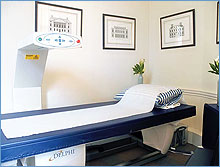46 Wimpole Street, London. W1G8SD
Prof. John Studd. e:[email protected] t:02074860497.
Osteoporosis is a condition of thinning and weakness of the bones resulting in fractures in later life particularly of the hip, the spine and the wrist. It is a major health hazard that results in an osteoporotic fracture in 1 in 3 women and although less well recognised, 1 in 12 men. It occurs particularly commonly with the oestrogen deficiency that follows the menopause. This leads to loss of collagen, most noticeably in the skin resulting in the thin inelastic skin and brittle nails that so frequently occurs after the age of 50. This collagen loss also occurs in the matrix of the skeleton with resulting loss of calcium, bone density and strength through decreased osteoblastic activity as described in the accompanying article.
A healthy lifestyle, exercise and a good diet are of importance in all things and certainly influence the incidence of osteoporosis. However there is no doubt that the best way for a woman to avoid osteoporosis is not to become hormone deficient. For men it is not so simple. Therefore oestrogens (HRT) would be the treatment of choice particularly in women under the age of sixty. Although oestrogens in the media seem to be under a cloud at the moment there is no evidence of harm, only benefit in women in this age group who start oestrogens. Such therapy also prevents hot flushes, vaginal dryness, loss of energy, loss of libido and the depression that also commonly occurs with hormone deficiency.
But first of all low bone density must be diagnosed by bone density screening. At the Osteoporosis Screening Centre we have the most recent technology in the form of the Hologic Delphi Dexa scan which enables accurate measurement of the bone density of the lumbar spine with a lateral spine view and the hip.
Screening is recommended for high-risk patients such as menopausal women particularly those with an early menopause or following early hysterectomy and removal of ovaries. It is also indicated in those who have lost their periods with an eating disorder, in those on steroid therapy, those who smoke and those who have had previous low impact fractures. Men and women with chronic kidney disease, chronic liver disease, longterm depression, chronic fatigue syndrome and HIV infection also more commonly have osteoporosis. In spite of this association with co-existant diseases it is healthy slim white women who are at greatest risk of osteoporosis. Overweight women will stress their joints but they usually make enough oestrogen in the body fat to protect them from osteoporosis.
Fortunately there are now many treatments for low bone density but first of all it has to be diagnosed.
The Centre
Patients can make their own booking and they will of course not be charged a consultation fee. The screening request form can be downloaded here (pdf 15k).
Since 1980 bone density screening has been performed in this clinic (formerly at 120 Harley Street) by the latest available technology and now the Hologic Delphi DEXA scan is used.
 « Click
to see larger image.
« Click
to see larger image.
Screening is recommended for high risk patients such as menopausal
women particularly those with an early menopause, weight loss amenorrhoea,
low body index, steroid or GnRH therapy, TAHBSO or previous low impact fractures.
Patients with chronic renal of liver disease, chronic illness depression, PMS,
chronic fatigue and HIV infection more commonly have osteopaenia or osteoporosis.
Repeat bone density measurement will be necessary to judge response to therapy - or non therapy.


Click images for larger versions

